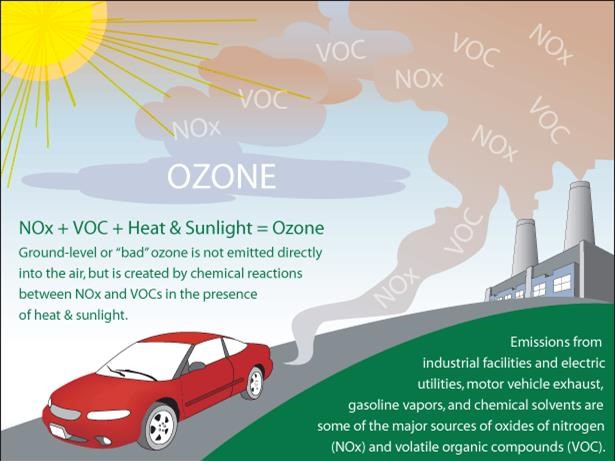Ground-level Ozone Basics
Ozone is a gas composed of three atoms of oxygen. Ozone occurs both in the Earth's upper atmosphere and at ground level. Ozone can be good or bad, depending on where it is found.
Called stratospheric ozone, good ozone occurs naturally in the upper atmosphere, where it forms a protective layer that shields us from the sun's harmful ultraviolet rays. This beneficial ozone has been partially destroyed by manmade chemicals, causing what is sometimes called a "hole in the ozone." The good news is, this hole is diminishing. .
Ozone at ground level is a harmful air pollutant, because of its effects on people and the environment, and it is the main ingredient in “smog.
How does ground-level ozone form?
Tropospheric, or ground level ozone, is not emitted directly into the air, but is created by chemical reactions between oxides of nitrogen (NOx) and volatile organic compounds (VOC). This happens when pollutants emitted by cars, power plants, industrial boilers, refineries, chemical plants, and other sources chemically react in the presence of sunlight.
Ozone is most likely to reach unhealthy levels on hot sunny days in urban environments, but can still reach high levels during colder months. Ozone can also be transported long distances by wind, so even rural areas can experience high ozone levels.

No comments:
Post a Comment